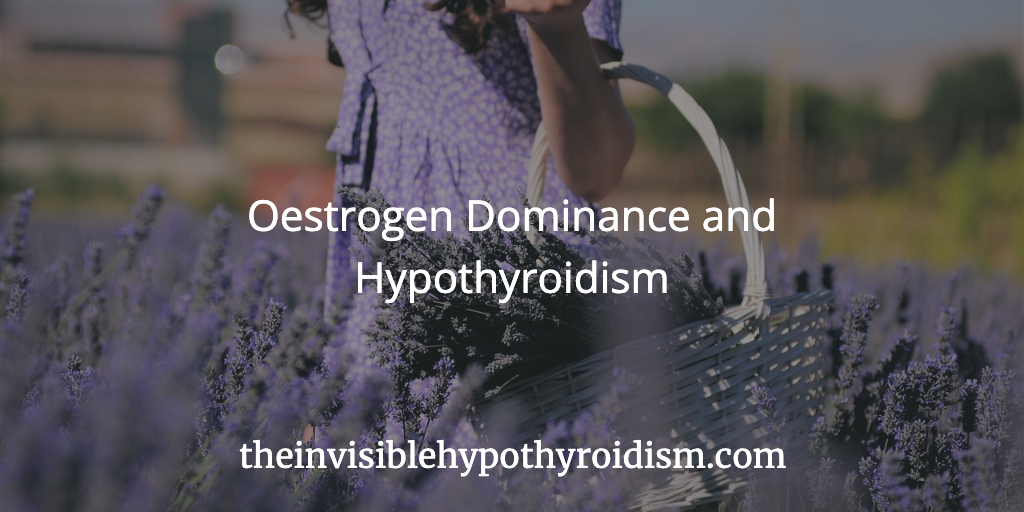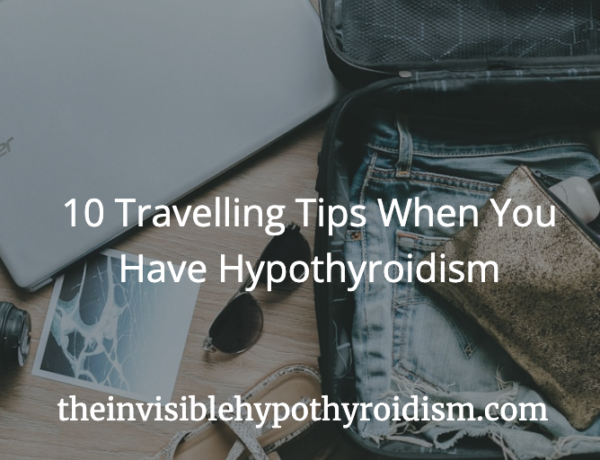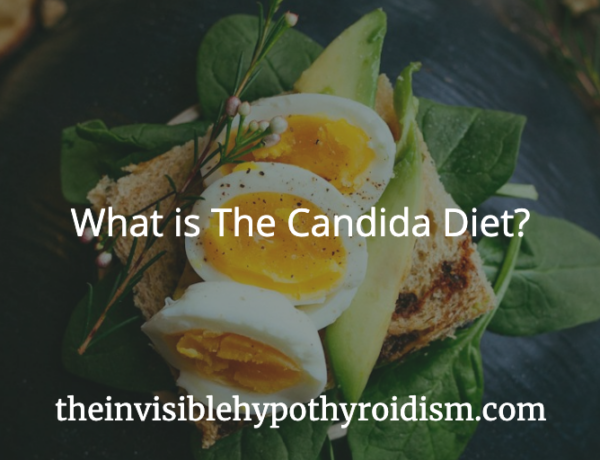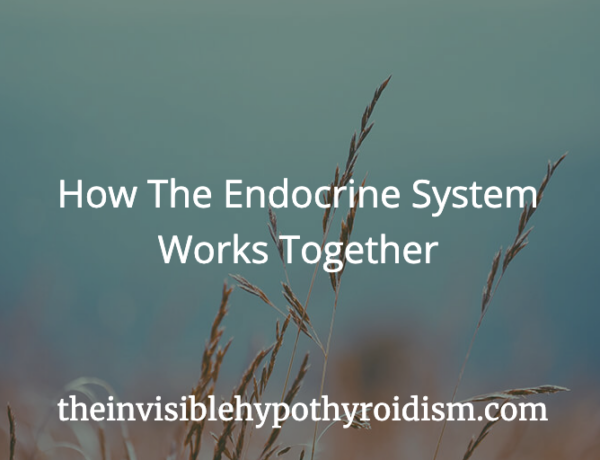Originally published on 14th November 2017 Last updated on 13th September 2024
As well as thyroid hormones, many other hormones are also part of the endocrine system, which all work in balance with one another. They regulate body temperature, metabolism, energy and reproduction.
Many thyroid patients, when piecing together their thyroid jigsaw puzzle, learn that they actually have more at play than just thyroid issues.
We often hear the phrase “Oestrogen Dominance”, but what does it mean? Is it real?
I’m one thyroid patient who, after years on the combined contraceptive pill, with period issues such as menorrhagia and irregularity as well as thyroid issues (hypothyroidism and Hashimoto’s), was told I had oestrogen dominance; where the balance of oestrogen to progesterone was very ‘off’.
What Are The Signs?
I was told I had an imbalance of oestrogen when I presented with period issues (irregular and not ovulating), severe cystic acne, migraines, adrenal dysfunction, oily skin, PMS and more.
A decreased sex drive, struggles to conceive, uterine fibroids and weight gain are also said to be signs or indications of “oestrogen dominance”.
PCOS, STD’s, fibroids and more were all ruled out as a cause.
What is Oestrogen?
Oestrogen is a hormone primarily produced by the ovaries and is responsible for the growth of the uterine lining during the first half of a woman’s cycle. Day one of this cycle is the first day of a woman’s period.
Progesterone is produced by the ovaries as well and its primary role is to prepare the uterus for conception.
Both these hormones (oestrogen and progesterone) are present throughout your whole cycle but in varying amounts depending on where in this cycle you are.
Oestrogen dominates the first half and progesterone dominates the second half of your cycle.
So What Does “Oestrogen Dominance” Mean?
This term is not widely recognised in mainstream medicine and is used in more lifestyle / functional / naturopathic health spaces. Mainstream or conventional medicine will often dispute that it is real.
However, many of us do report symptoms such as those previously mentioned, with a high oestrogen test result, which then resolve when a further test result shows more ‘normal’ levels of oestrogen, perhaps following the implementation of certain protocols which are said to target this imbalance.
The explanation for oestrogen dominance is that since the endocrine system is such a delicate balance of various hormones, when one part of that system (the hypothalamus, pituitary, thyroid, parathyroids, adrenals, pineal gland, reproductive organs, pancreas) goes awry, it can have a knock-on effect to others.
We already know that some of us may have adrenal dysfunction in conjunction with hypothyroidism, and adrenal issues are said to drive oestrogen dominance, as well as oestrogen dominance causing adrenal dysfunction.
So, it can be worth considering, however, evidence is lacking.
Other Possibilities
As oestrogen dominance isn’t a widely recognised condition yet, it is also important to keep in mind that a diagnosis of this could potentially lead to a misdiagnosis of a condition that is recognised and can be treatment with well-known methods.
Examples include a thyroid issue, PCOS, perimenopause, not consuming enough calories / chronic dieting and so on. There are concerns that many diagnoses of ‘oestrogen dominance’ are stopping people from getting the correct diagnosis.
For example, if you have PCOS and are not regularly ovulating due to this, but are told you have oestrogen dominance, then you will likely be feeling unwell due to the effects of PCOS and not ovulating. Every woman has a cycle or two a year where she does not ovulate, and this is normal, but if it happens more often, then investigations are needed.
If oestrogen is low on a blood test because you are not ovulating, then the cause needs exploring.
How Do I Know if I Have ‘Oestrogen Dominance’?
Tests for oestrogen dominance are cited to be:
- testing your oestrogen level on cycle days 3-5
- and testing your progesterone level at its peak, around day 21 of your cycle (this may differ or be difficult to predict if you have an irregular cycle). Other sources say 7 days after testing oestrogen.
These tests are done via blood sample.
Testosterone can be tested at anytime during the month and checking FSH may also be beneficial. These tests give an overview of your sex hormone health and may help determine if you have an imbalance in them.
Many functional medicine practitioners diagnose and treat oestrogen dominance without test results and based on symptoms alone.
Where Can I Order Testing for ‘Oestrogen Dominance’?
This UK test checks almost all of the above tests in one go (minus progesterone – you could order this separately) and this US lab checks all of them in one test.
Who Can Help Me?
In terms of medical professionals, naturopathic and functional practitioners and doctors are often preferred by thyroid patients trying to combat oestrogen dominance.
I worked with a functional medicine practitioner to address my ‘oestrogen dominance’. My NHS GP acknowledged that my high oestrogen levels on blood tests were likely the cause behind my acne and period complaints, but his only suggestion was to put me back on a contraceptive pill, which only masks the issue and does not treat it for many people.
So I found working with a functional medicine practitioner immensely helpful when it came to addressing these symptoms.
However, I am undecided whether the protocols she had me implement really addressed any ‘oestrogen dominance’, or if they supported my overall health and these symptoms eventually resolved (and always would have done) anyway. I personally feel quite unsure about whether oestrogen dominance is a real concern or real “thing” at all. But what I do know is that the protocols did help me.
How Do You Combat “Oestrogen Dominance”?
These are things my functional medicine practitioner had me do:
- Ensure that you’re eating plenty of fibre and that your bowels are moving regularly. Bowel movements of at least once a day are ideal, so eat plenty of fibre-rich food (though not close to taking your thyroid meds as it can affect absorption). You can also try magnesium supplementation to get bowels moving more regularly.
- Start your day with half a lemon squeezed in to some hot water.
- Drink plenty of water throughout the day.
- Explore gut health and digestive enzymes to get your digestive system working more efficiently.
- Look for BPA and BPS-free water bottles, storage containers and minimise exposure through cosmetics and other household products. Reduce use of plastics. Read this article about oestrogen-mimicking chemicals and how to limit exposure to them.
- Avoid using hormonal contraceptives, which inevitably upset the oestrogen-progesterone balance and even when you come off them, can take years to correct (like me).
- Products such as DIM and broccoli sprout extract can also help to clear excess oestrogen apparently. Broccoli sprout extract improved my bowel movements, acne and migraines associated with oestrogen dominance.
Avoid stress
Easier said than done, I know! But stress is linked to various hormone levels.
When a person is stressed, the adrenal glands pump out extra cortisol, the stress hormone. Stress can come from mental stress, emotional and physical and when this goes on for a long period of time, you can develop adrenal dysfunction, or ‘adrenal fatigue‘, an issue many thyroid patients may also have.
Symptoms include ongoing fatigue, headaches, sleep disruptions, anxiety, feeling irritable and many more. When this becomes chronic, it disrupts the normal circadian rhythm and the stress response of the Hypothalamus-Pituitary-Adrenal axis. There is the theory that eventually, the adrenal glands may start to run low on cortisol and begin ‘stealing’ progesterone to convert in to more cortisol, depleting levels even further, increasing the imbalance between progesterone and oestrogen.
This stress and pressure can then inhibit the liver from converting thyroid hormone T4 (the storage hormone) to T3 (the active hormone), which contributes to us feeling like unwell and can also prevent it from detoxifying the excess oestrogen. When this happens, the oestrogen can start to build up in tissues and cause oestrogen levels to rise even further.
Come Off Any Contraceptive Pill
Contraceptive pills often do not help hormonal imbalances, but may worsen or mask them. They are not treating root causes of symptoms.
What can be frustrating is that whilst conventional medicine recognises that increased oestrogen levels can lead to increased chances of fibroids and breast cancer for example, they don’t typically look to address the issue directly, looking at the body and endocrine system as a whole.
Progesterone Cream
Progesterone supplementation (natural progesterone cream) is sometimes used, but really should only be used with guidance from a medical professional
Some books for further reading on this include:
The Hormone Cure by Sara Gottfried, MD
Beyond The Pill by Dr. Jolene Brighten (I highly recommend reading this one)
Conclusion
So in conclusion, many functional practitioners will diagnose and treat thyroid patients presenting with symptoms such as acne, migraines, period complaints, low sex drive and more, with something called oestrogen dominance. But, the evidence is lacking on whether this is a real issue that requires treatment.
Many thyroid patients do report feeling much better after implementing protocols that claim to address this sex hormone imbalance, but I remain unsure about it.
Do you think Oestrogen Dominance is real? Share your thoughts below.
You can click on the hyperlinks in the above post to learn more and see references to information give, but further information can also be found at:
References:
[1] https://www.ncbi.nlm.nih.gov/pubmed/3066320
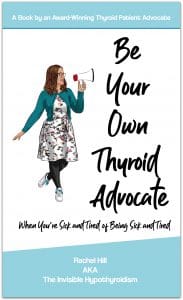
The book Be Your Own Thyroid Advocate: When You’re Sick and Tired of Being Sick and Tired, which details the many things Rachel had to do to get her thyroid and overall endocrine health back on track. Learn to advocate for yourself.

